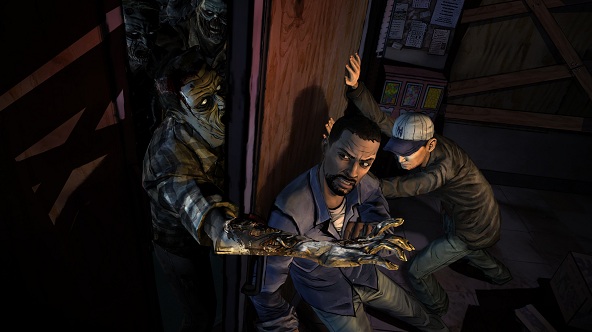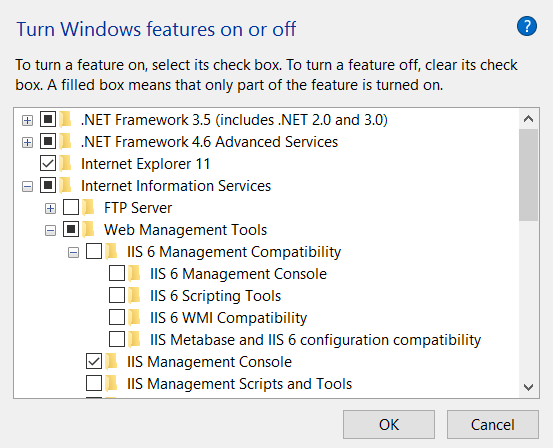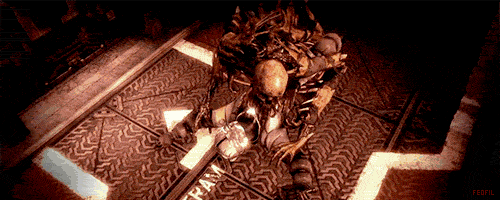

Microsoft’s enthusiasm and unwavering commitment to the Kinect motion control device has earned the company a blend of disdain and praise – to extremely varying degrees. With once-revered developer Rare credited with many Kinect-focused titles of similarly varying quality, the team has been entrusted to create a must-have next-gen title in Kinect Sports Rivals for the Xbox One.
Our early hands-on time with the game showed that there was reason for enthusiasm and some interest, but now that we’ve had much more time with the game, does it get the second generation of Kinect experiences off on a strong foot, or do the problems of old remain?
From the very start, it’s clear that the developers have taken the task of showcasing the Xbox One’s hardware and camera seriously, with a level of polish and breadth of design for which Rare and Microsoft should be commended. If this level of depth and attention to detail is to be expected from Xbox One’s Kinect offerings, then that is absolutely good news for gamers both young and old.
Whether the process of scanning in each player’s body and facial structure (in order to recreate a digital character) is as detailed a process as implied, or simply selecting a combination from preset components, the overall experience – and the unique Pixar-esque aesthetic adopted throughout the game – is pleasant enough to keep players from caring one way or the other.
That sense of fun and light-hearted design not only makes Kinect Sports Rivals a no-brainer for younger players or family gaming sessions, but does a great deal in helping users forget they’re hopping from one Kinect mini-game to another.
Motion-controlled games tend to be given special treatment or criticism quite often, but if KSR is going to be held to the same standards as the typical launch games, then the first expectation is not to reinvent the wheel, but wow audiences with next-gen tech and the promise of potential. In that respect, Rare has accomplished the task beautifully.
From the first introduction to the island upon which the game’s action takes place, and ranging from events like Wake Racing, Tennis, and Rock Climbing, the visuals are top-notch – a far cry from those of the Xbox 360’s Kinect offerings. Graphics should never be overstated, but those in KSR blows the perception that Kinect titles must be ‘budget’ completely out of the water.
For a lengthier look at the improvements in Kinect 2.0’s ability to read slight gestures and motions, read our full preview impressions. Suffice to say that whether it’s a flick of the wrist or closing of the palm, the precision was – at least in our experience – nearly flawless. That in itself would be reason for celebration for gamers who regularly put their Kinect to use, and is; even if the resulting gameplay and required gestures occasionally leave something to be desired.
The full-body interaction in game modes like Jet Skiing and Rock Climbing are a welcome change that offer compelling experience regardless of the input methods, but the limited actions involved in the likes of Soccer, Tennis and Bowling are not quite as successful for extended play sessions. Add the fact that the difficulty is at times absurdly easy in the game’s opening stages, and some players may pass on certain modes before long.
Partly due to this imperfect difficulty curve, and partly due to Microsoft’s emphasis on their cloud-based multiplayer, it is in competing against friends and online rivals that the game shines. Posting a personal best is one type of enjoyment, but pulling opponents from a climbing wall, or defeating them with an overhand smash is as satisfying as one would assume. But even if the individual game modes may not be consistently impressive or immersive, the story and progression at least work to guide players through the game’s strengths in a refreshing way.
The Scottish-voiced narrator and excessively energetic Coach may not be a hit with all senses of humor, but Rare decided to add story, characters, and clashes where none were needed. The fact that they, in our opinion, succeed more often than they fail is a positive addition in the end. Again, these elements will be the biggest hit with the youngest of gamers, but it implies a dedication and need for innovation that is more than welcome.
We may be left wondering what it was about the Soccer minigame, or Target Shooting that the developers felt made them worthy entries alongside the game’s more successful experiences, but no aspect of the game fails without some sign of promise or potential. And when it succeeds in achieving the goal that was clearly set out, Kinect Sports Rivals does feel like a next-gen experience. How much of that feeling is due to its underwhelming predecessors is up for debate, but the effect is the same.
It is certainly not a runaway success, or proof that Kinect titles can be every bit as precise and well-realized as those guided with a controller. But in showcasing the increased precision the Xbox One’s Kinect makes possible, and being given the time and resources to make it look the part of a next-gen minigame collection, Rare has pushed the envelope a bit farther forward. The result is a game with issues, but one that is a success for several reasons.
If you’re looking for a Kinect title for the entire family, or one that merely shows the benefits of next-gen hardware hold promise for motion controlled gaming, then Kinect Sports Rivals won’t disappoint. If you’re hoping for a sports simulator that succeeds at every turn, well… you’ve likely got a lot more waiting to do.
_____
Kinect Sports Rivals launches April 8, 2014 exclusively for the Xbox One.
Follow Andrew on Twitter @andrew_dyce.




 Trove: Neon Nightsky Wings Crafting Guide
Trove: Neon Nightsky Wings Crafting Guide Facebook is Making You Look Like a Terrible Gamer
Facebook is Making You Look Like a Terrible Gamer The Walking Dead: Survival Instinct Collectible Items Guide
The Walking Dead: Survival Instinct Collectible Items Guide 19 Most Brutal Boss Thrashings in Video Games
19 Most Brutal Boss Thrashings in Video Games Life Is Strange (PC): All optional Photo Locations
Life Is Strange (PC): All optional Photo Locations